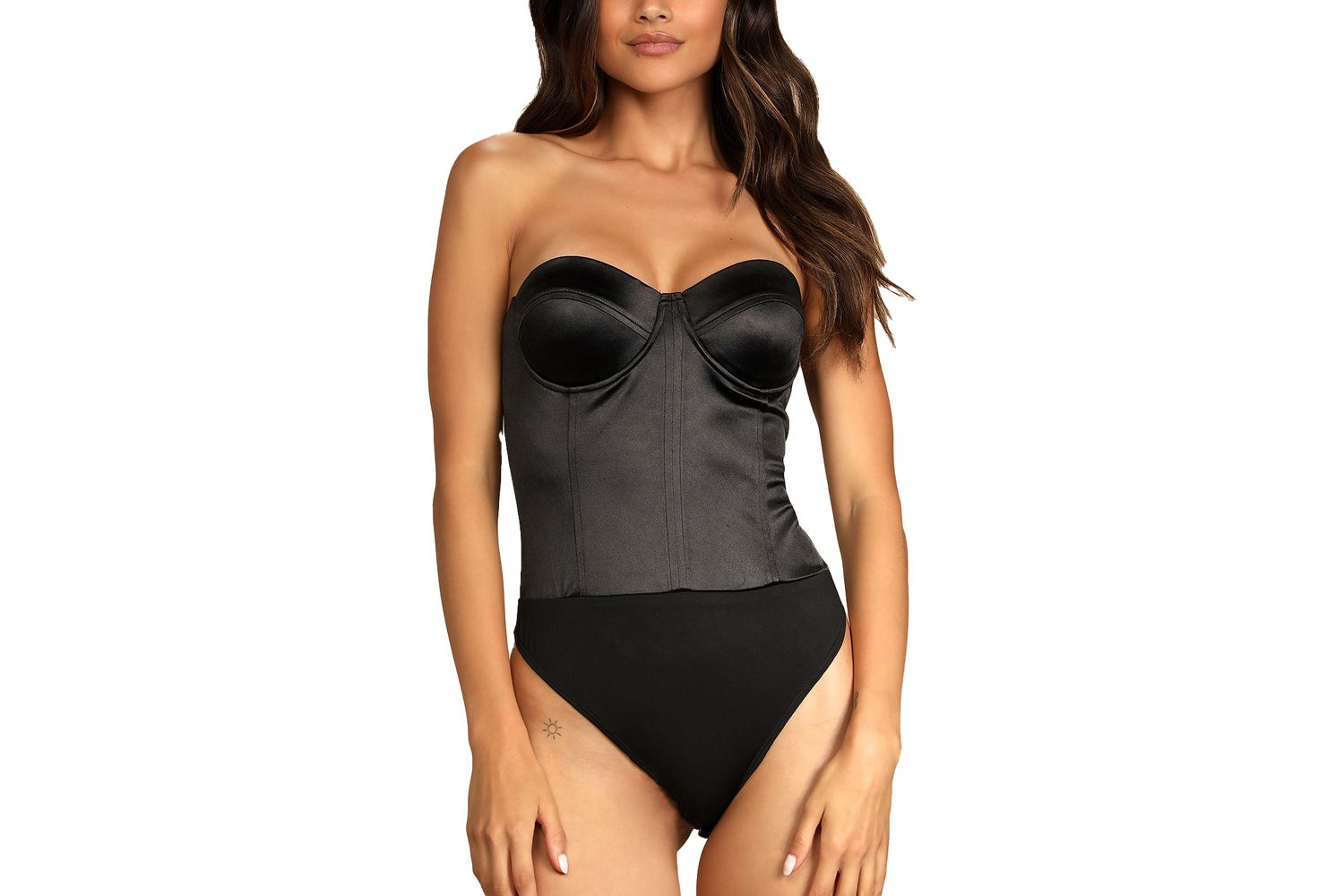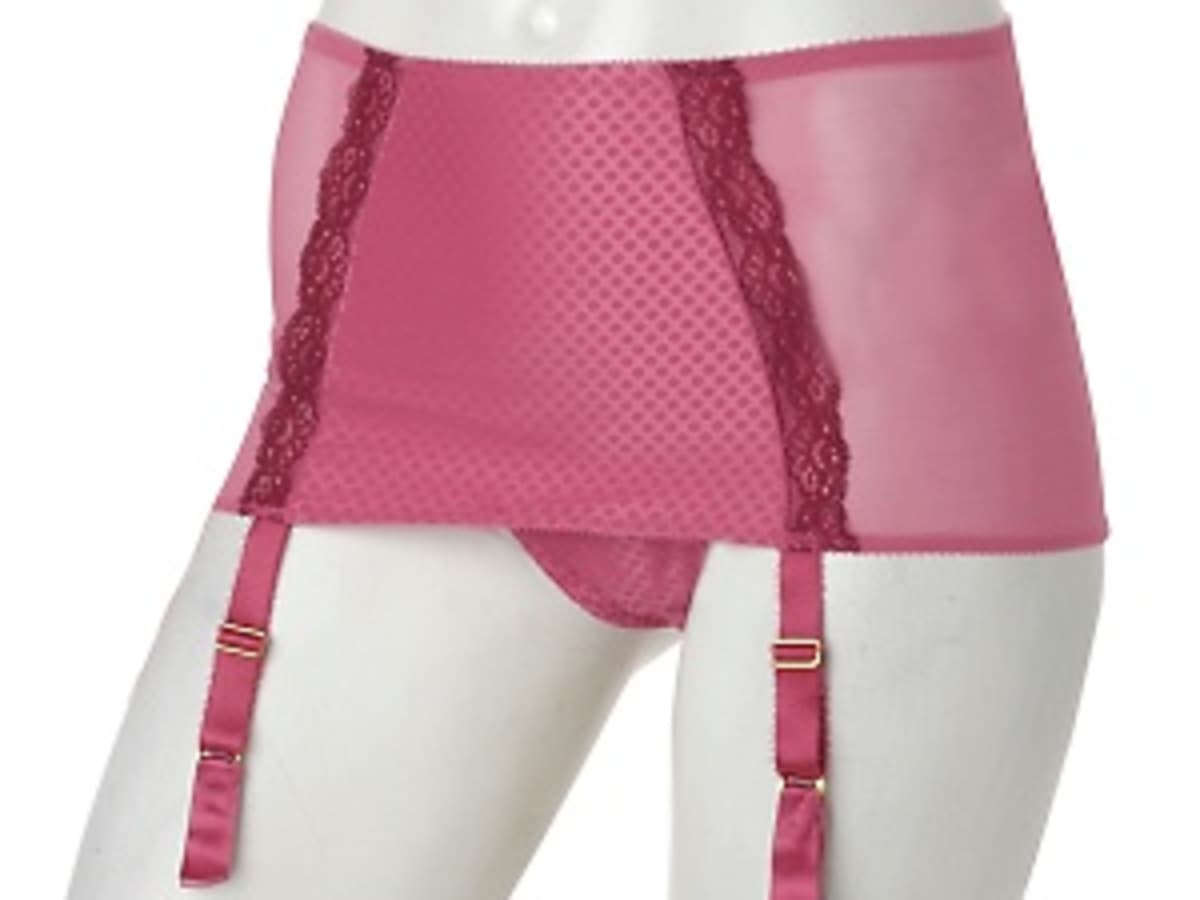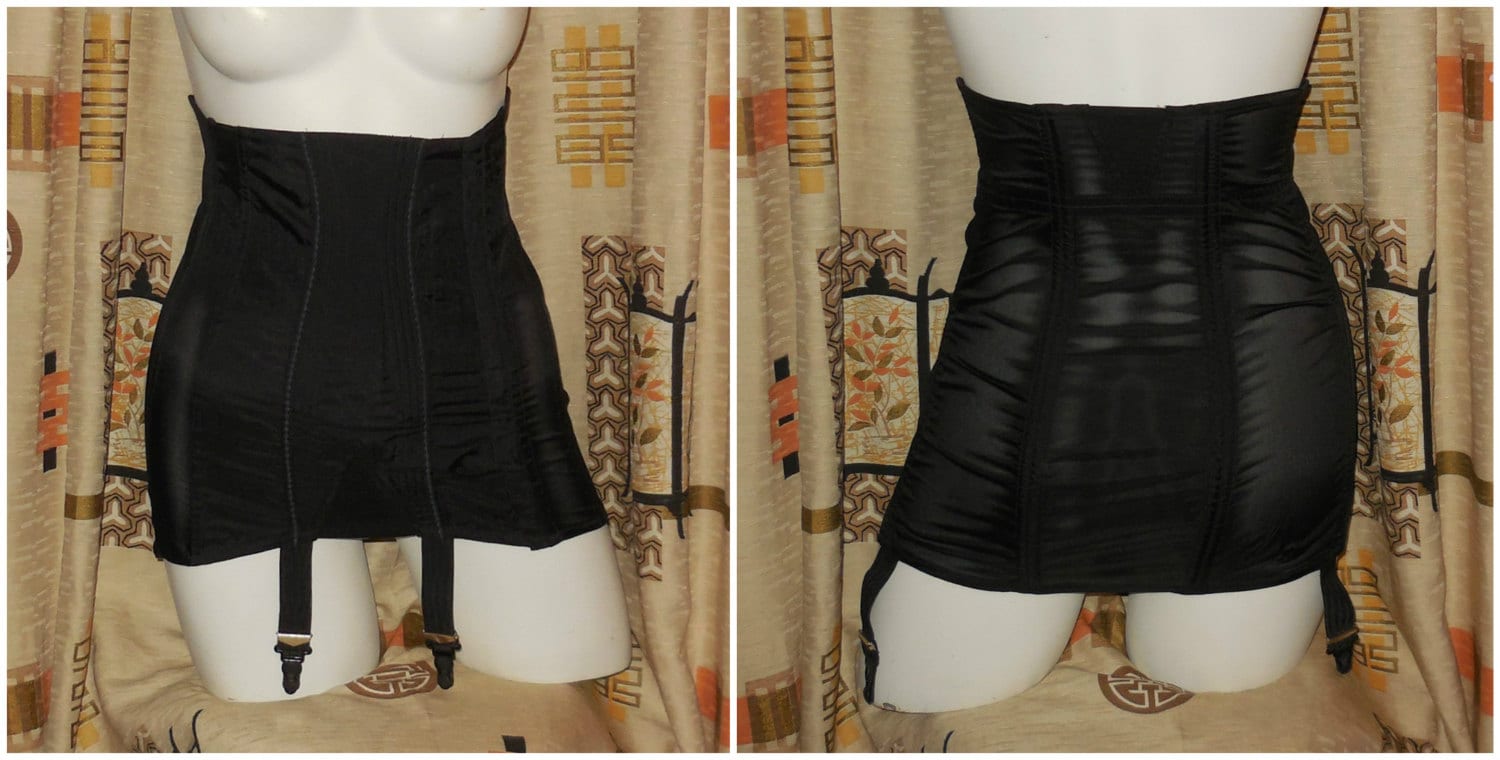Home>How-to Guides>For Women>How To Start Lingerie Business


For Women
How To Start Lingerie Business
Published: July 31, 2023
Learn how to start a profitable lingerie business for women. Get expert advice, tips, and strategies to launch your own successful venture.
(Many of the links in this article redirect to a specific reviewed product. Your purchase of these products through affiliate links helps to generate commission for Under-tec.com, at no extra cost. Learn more)
Table of Contents
- Introduction
- Step 1: Researching the Lingerie Market
- Step 2: Creating a Business Plan
- Step 3: Registering Your Lingerie Business
- Step 4: Sourcing Lingerie Products
- Step 5: Setting Up an Online Store
- Step 6: Marketing and Promoting Your Lingerie Business
- Step 7: Managing Inventory and Fulfillment
- Step 8: Providing Excellent Customer Service
- Step 9: Scaling and Growing Your Lingerie Business
- Conclusion
Introduction
Welcome to the exciting world of lingerie business! Whether you’re a passionate entrepreneur or a fashion enthusiast looking to embark on a new venture, starting a lingerie business can be a rewarding and profitable endeavor. The lingerie industry is a thriving sector, offering a wide range of intimate apparel to cater to the diverse needs and preferences of women worldwide.
From delicate lace bras and sexy underwear sets to comfortable sleepwear and shapewear, lingerie plays an essential role in women’s lives, empowering them and boosting their confidence. As more women embrace the idea of self-expression and body positivity, the demand for lingerie has experienced a significant surge in recent years.
However, launching a successful lingerie business requires careful planning, strategic decision-making, and a deep understanding of the market. In this comprehensive guide, we will take you through the step-by-step process of starting your own lingerie business and provide valuable insights to help you navigate the industry’s intricacies.
Throughout this journey, we will delve into various aspects such as researching the lingerie market, creating a business plan, registering your business, sourcing high-quality lingerie products, setting up an online store, marketing and promoting your brand, managing inventory and fulfillment, providing excellent customer service, and scaling your business for long-term growth.
Whether you aim to target a specific niche, offer luxury lingerie, or cater to affordable everyday essentials, this guide will equip you with the necessary knowledge and tools to build a successful lingerie business. So, let’s get started on this exciting adventure and make your dream of owning a lingerie business a reality!
Step 1: Researching the Lingerie Market
Before diving into the lingerie business, it is crucial to conduct thorough research to gain a deep understanding of the market. This research will help you identify your target audience, analyze competitors, and spot trends that can give you a competitive edge. Here are some key steps to follow:
- Identify your target audience: Begin by defining the specific group of women you want to cater to with your lingerie products. Consider factors such as age, body type, style preferences, and budget. Understanding your target audience will guide your product selection and marketing efforts.
- Analyze competitors: Research existing lingerie brands, both local and global, that target a similar audience. Study their product offerings, pricing strategies, marketing approaches, and customer reviews. This analysis will help you identify gaps in the market and differentiate your brand.
- Spot trends: Stay updated with the latest trends in the lingerie industry. Follow fashion blogs, attend industry trade shows, and monitor social media platforms to learn about emerging styles, materials, and designs.
- Consider sustainability and ethical practices: With growing awareness of sustainability and ethical practices, consumers are increasingly seeking eco-friendly and ethically sourced lingerie. Research suppliers and manufacturers that align with these values to appeal to conscious consumers.
- Explore potential partnerships: Look for opportunities to collaborate with influencers, lingerie bloggers, and other businesses in the fashion industry. Partnering with the right individuals or brands can help increase your visibility and credibility.
By dedicating time to comprehensive market research, you will gain valuable insights that can influence your product selection, pricing, branding, and marketing strategies. This knowledge will empower you to make informed decisions and position your lingerie business for success.
Step 2: Creating a Business Plan
A well-crafted business plan is essential for guiding your lingerie business towards success. It serves as a roadmap, outlining your goals, strategies, financial projections, and other important aspects of your venture. Here are the key elements to include when creating your business plan:
- Executive Summary: Provide an overview of your lingerie business, including its mission statement, vision, and the unique value it offers to customers.
- Market Analysis: Detail your findings from the research conducted in Step 1. Describe your target audience, market size, competition, and the trends shaping the lingerie industry.
- Product Line: Specify the types of lingerie products you plan to offer, including a range of styles, sizes, and price points. Highlight any unique features or specialty items that set your brand apart.
- Marketing and Sales Strategies: Outline your plans for promoting and selling your lingerie products. This can include online marketing, influencer partnerships, social media campaigns, and collaborations with retailers or distributors.
- Management and Organization: Describe the structure of your business, including the roles and responsibilities of key team members. If you are a sole proprietor, outline your own qualifications and expertise.
- Financial Projections: Provide a detailed analysis of your expected revenue, expenses, and profitability. Include a break-even analysis, cash flow projections, and funding requirements.
- Operations Plan: Explain the day-to-day operations of your lingerie business, from sourcing suppliers and inventory management to fulfillment and customer service.
- Legal Considerations: Discuss any legal requirements or licenses needed to operate your lingerie business. This may include registering your business, obtaining permits, and complying with industry regulations.
- Risks and Contingency Plans: Identify potential risks and challenges that may impact your lingerie business. Develop strategies to mitigate these risks and contingency plans to address unexpected events.
Creating a well-researched and comprehensive business plan will not only help you stay focused and organized but also increase your chances of securing funding from investors or lenders. It will serve as a valuable tool throughout your lingerie business journey, enabling you to make informed decisions and adapt to changing market conditions.
Step 3: Registering Your Lingerie Business
Registering your lingerie business is a critical step in establishing your brand and ensuring its legality. The process may vary depending on your location and business structure, but here are some general steps to follow:
- Choose a Business Structure: Decide on the legal structure that best suits your lingerie business, such as sole proprietorship, partnership, or limited liability company (LLC). Consult with a lawyer or accountant to understand the implications of each structure.
- Choose a Name: Select a unique and memorable name for your lingerie business. Ensure that the name is not already in use by conducting a thorough search in the business registry and trademarks database.
- Register with the Government: Register your lingerie business with the appropriate government authorities. This typically involves obtaining a business license, tax identification number, and any required permits.
- Apply for Trademarks: Consider protecting your brand by applying for trademarks on your business name, logo, or other distinctive elements. Consult with an intellectual property lawyer to understand the process and benefits of trademark registration.
- Obtain Licenses and Permits: Research and obtain any necessary business licenses or permits specific to the lingerie industry. This may include health and safety permits, retail licenses, or permits for online sales.
- Set Up Financial Accounts: Open a separate business bank account to manage your lingerie business finances. This will help ensure accurate bookkeeping and financial tracking.
- Consult with Professionals: Consider consulting with an attorney, accountant, or business advisor to ensure compliance with local regulations and get expert guidance throughout the registration process.
Registering your lingerie business not only legitimizes your operations but also provides you with important legal protections. It allows you to operate under a recognized entity, access banking services, protect your intellectual property, and comply with tax requirements. While the registration process may involve some paperwork and fees, the benefits of a properly registered business are invaluable in the long run.
Step 4: Sourcing Lingerie Products
One of the key factors that will define the success of your lingerie business is the quality and variety of the products you offer. Finding reliable and high-quality sources for your lingerie inventory is crucial. Here are some steps to help you source the best lingerie products for your business:
- Identify Suppliers: Research and identify potential suppliers who specialize in lingerie products. Look for suppliers who offer a wide range of styles, materials, sizes, and price points to cater to your target audience.
- Attend Trade Shows: Consider attending lingerie trade shows and exhibitions where you can meet suppliers face-to-face, see their products firsthand, and build relationships with industry professionals.
- Request Samples: Before making a bulk purchase, request samples from multiple suppliers to evaluate the product quality, design, and fit. This will ensure that you are offering a superior product to your customers.
- Check Certification and Compliance: Ensure that the suppliers you choose adhere to ethical and sustainable manufacturing practices. Look for certifications such as organic, fair trade, or eco-friendly to align with the values of conscious consumers.
- Negotiate Pricing and Terms: Negotiate with suppliers to get the best pricing and terms for your lingerie inventory. Consider factors such as minimum order quantities, discounts, and shipping options to optimize your profit margins.
- Establish Long-Term Relationships: Building strong relationships with your suppliers is essential. Good communication and reliability will ensure smooth transactions, timely deliveries, and the ability to restock your inventory when needed.
- Consider Private Label or Customization: If you want to create a unique and exclusive brand, explore options for private label or customization with your suppliers. This will give you the opportunity to offer personalized lingerie designs that stand out in the market.
- Monitor Trends and Update Inventory: Stay abreast of the latest lingerie trends and consumer preferences. Regularly update your inventory to offer new and exciting styles that resonate with your target audience.
Remember, sourcing lingerie products is an ongoing process. Continuously evaluate your suppliers, stay connected with industry updates, and solicit customer feedback to ensure the quality and relevancy of your inventory. By offering a diverse selection of high-quality lingerie, you can attract and retain loyal customers, establishing your business as a go-to destination for all their intimate apparel needs.
Step 5: Setting Up an Online Store
In today’s digital age, having a strong online presence is crucial for the success of your lingerie business. Setting up an online store provides a platform to showcase your products, reach a broader audience, and offer a convenient shopping experience for your customers. Here are key steps to follow when establishing your online store:
- Select an E-Commerce Platform: Choose an e-commerce platform that suits your business needs and budget. Popular options include Shopify, WooCommerce, or BigCommerce. Evaluate their features, pricing plans, and customization options.
- Design Your Store: Create a visually appealing and user-friendly website that aligns with your brand identity. Customize the layout, colors, fonts, and images to create a cohesive and attractive online store.
- Upload Product Listings: Display your lingerie products with high-quality images and detailed descriptions. Organize them into categories and subcategories to make it easy for customers to navigate and find what they’re looking for.
- Choose a Secure Payment Gateway: Integrate a secure payment gateway to offer safe and convenient transactions. Options like PayPal, Stripe, or Square are popular choices that provide a seamless checkout process.
- Ensure Mobile-Friendliness: Optimize your online store to be mobile-friendly, as a significant percentage of online shopping now happens on mobile devices. Make sure your website is responsive and provides a smooth experience on smartphones and tablets.
- Implement SEO Strategies: Optimize your online store for search engines by incorporating relevant keywords in your product descriptions, meta tags, and URLs. Create engaging content, such as blog posts or articles, to attract organic traffic to your website.
- Offer Multiple Shipping Options: Provide your customers with a range of shipping options, including express delivery, standard shipping, and international shipping if applicable. Partner with reliable shipping carriers to ensure timely and secure deliveries.
- Set Up Return and Exchange Policies: Establish clear and customer-friendly return and exchange policies. Make sure to communicate them clearly on your website to instill confidence in your customers and provide them with a hassle-free shopping experience.
- Enhance Customer Experience: Incorporate features that enhance the customer experience, such as live chat support, product reviews, and personalized recommendations. Offer excellent customer service to build trust and loyalty.
- Market Your Online Store: Develop a comprehensive marketing strategy to drive traffic to your online store. Utilize social media platforms, email marketing campaigns, influencers, and other digital marketing techniques to promote your lingerie business.
Setting up an online store requires careful planning, attention to detail, and continuous improvement. Regularly monitor website analytics, customer feedback, and industry trends to make adjustments and optimize your online store’s performance. With a well-designed and user-friendly online store, you can showcase your lingerie products effectively, attract a wider customer base, and drive the growth of your business.
Step 6: Marketing and Promoting Your Lingerie Business
Effective marketing and promotion are essential for creating awareness, attracting customers, and building a strong brand presence for your lingerie business. Here are some key strategies to consider:
- Define Your Brand Identity: Clearly define your brand identity and values. Determine what sets your lingerie business apart from competitors, and showcase it through consistent branding, including your logo, colors, and messaging.
- Create Engaging Content: Develop a content marketing strategy to engage your target audience. Create blog posts, articles, videos, and social media content that offer valuable information, tips, and inspiration related to lingerie styling, body confidence, and self-care.
- Utilize Social Media: Leverage the power of social media platforms to connect with your target audience. Create visually appealing posts, share customer testimonials, collaborate with influencers, and engage with your followers through contests or Q&A sessions.
- Implement SEO: Optimize your website and content with relevant keywords to improve your search engine rankings. Focus on long-tail keywords specific to lingerie products and target geographic locations if you have a physical store.
- Run Paid Advertising: Use pay-per-click (PPC) advertising platforms such as Google Ads or social media ads to reach a larger audience. Target specific demographics and interests to maximize the impact of your ads.
- Collaborate with Influencers: Partner with influential bloggers, vloggers, or social media personalities in the fashion or lingerie niche. They can showcase your products, provide reviews, and promote your brand to their engaged audience.
- Engage in Email Marketing: Build an email subscriber list and regularly send out newsletters, updates, promotions, and exclusive offers. Personalize your emails and segment your subscribers based on their interests and purchase history for better engagement.
- Participate in Trade Shows and Events: Showcase your lingerie products at trade shows, exhibitions, or fashion events. This gives you the opportunity to attract potential customers, connect with industry professionals, and gain exposure.
- Leverage User-Generated Content: Encourage your customers to share their experiences by featuring their photos or testimonials on your website and social media platforms. User-generated content adds authenticity and builds trust with your audience.
- Collaborate with Other Brands: Consider partnering with complementary brands to cross-promote each other’s products. This can expand your reach and introduce your lingerie business to a new audience.
Remember, marketing is an ongoing process, so monitor and evaluate the effectiveness of your strategies regularly. Adapt and refine your approach based on customer feedback, sales data, and industry trends. By ensuring consistent marketing efforts, you can increase brand visibility, attract customers, and establish a loyal customer base for your lingerie business.
Step 7: Managing Inventory and Fulfillment
Efficient management of inventory and fulfillment is essential to meet customer demands, maintain a smooth operation, and ensure customer satisfaction for your lingerie business. Here are key steps to manage inventory and fulfillment effectively:
- Implement Inventory Management Software: Invest in a reliable inventory management system or software to keep track of your lingerie products, including stock levels, sales, and reordering needs.
- Regularly Track and Monitor Inventory: Conduct regular stock audits and analyze sales data to determine fast-moving and slow-moving products. This helps you make data-driven decisions when it comes to restocking and managing inventory levels.
- Establish Relationships with Suppliers: Maintain open communication with your suppliers to ensure a steady supply of lingerie products. Regularly review and update your agreements to meet market demands and optimize your inventory assortment.
- Implement a Just-in-Time (JIT) System: Adopt a Just-in-Time inventory strategy to minimize excess inventory and storage costs. This approach involves ordering inventory as needed, reducing the risk of overstocking or stockouts.
- Streamline the Order Fulfillment Process: Develop efficient processes for packaging, labeling, and shipping orders. Utilize technology to automate order fulfillment tasks and minimize errors in shipping and handling.
- Offer Multiple Shipping Options: Provide flexible shipping options to cater to different customer preferences. Offer express delivery, standard shipping, and international shipping options if applicable.
- Implement Return and Exchange Policies: Create clear policies and procedures for returns and exchanges. Communicate these policies to customers to facilitate smooth returns and ensure customer satisfaction.
- Monitor Customer Feedback: Regularly engage with customer feedback and reviews to identify any issues related to fulfillment or inventory. Address customer concerns promptly to improve their shopping experience.
- Utilize Dropshipping or Third-Party Warehousing: Consider using dropshipping or partnering with a third-party warehouse for inventory storage and fulfillment. This can help streamline operations and reduce the burden of warehousing.
- Forecast and Plan for Seasonal Demand: Analyze sales patterns and historical data to anticipate seasonal demand fluctuations. Plan your inventory and marketing campaigns accordingly to fully capitalize on peak seasons.
By effectively managing your inventory and fulfillment processes, you can minimize costs, reduce the risk of stockouts, and ensure accurate and timely order deliveries. Continuously monitor and evaluate your processes to identify areas for improvement and adapt to changing customer demands. With well-managed inventory and smooth order fulfillment, you can provide an exceptional customer experience and foster customer loyalty for your lingerie business.
Step 8: Providing Excellent Customer Service
Providing excellent customer service is crucial for the success and growth of your lingerie business. Satisfied customers not only become loyal repeat customers but also serve as brand advocates, spreading positive word-of-mouth and contributing to your business’s reputation. Here are some key strategies to ensure excellent customer service:
- Train and Empower Your Customer Service Team: Invest in training your customer service team to effectively address customer inquiries, concerns, and requests. Equip them with product knowledge and communication skills to provide prompt and helpful assistance.
- Respond Promptly: Aim to respond to customer inquiries and concerns promptly, preferably within 24 hours. Demonstrate a sense of urgency and attentiveness to show that you value your customers’ needs.
- Practice Active Listening: Train your customer service team to actively listen to customer feedback, concerns, and suggestions. This helps in understanding their needs and providing suitable solutions.
- Personalize Communication: Treat each customer as an individual and personalize your communication. Address them by name and tailor your responses to their specific inquiries or issues.
- Resolve Issues Professionally: Handle customer complaints or issues with professionalism and empathy. Apologize for any inconvenience caused and focus on finding a suitable solution to resolve the problem in a timely manner.
- Offer a Hassle-Free Return Policy: Communicate a clear and customer-friendly return policy. Make it easy for customers to return or exchange items, ensuring a smooth and hassle-free process.
- Solicit Feedback: Regularly seek feedback from customers to understand their experiences and gather insights for improvement. Encourage reviews and testimonials to showcase positive experiences and build trust with prospective customers.
- Surprise and Delight: Go the extra mile to surprise and delight your customers. Offer small gestures such as personalized thank-you notes or surprise gifts to show appreciation and exceed their expectations.
- Implement a Loyalty Program: Reward loyal customers with a loyalty program that offers exclusive deals, discounts, or early access to new products. This fosters a sense of appreciation and loyalty towards your brand.
- Continuously Improve: Regularly analyze customer feedback and identify areas for improvement. Use the insights gained to enhance your products, services, and overall customer experience.
Remember, excellent customer service is an ongoing commitment. Continuously evaluate and refine your customer service processes and strategies based on customer feedback and changing market dynamics. By providing exceptional customer service, you can build strong relationships, foster customer loyalty, and differentiate your lingerie business from competitors.
Step 9: Scaling and Growing Your Lingerie Business
Once you have established a solid foundation for your lingerie business, it’s time to focus on scaling and growing your operations. Scaling ensures that your business can handle increased demand and seize opportunities for expansion. Here are key steps to consider when scaling and growing your lingerie business:
- Analyze Data and Metrics: Continuously monitor and analyze key performance metrics such as sales data, customer acquisition costs, and customer lifetime value. Use this data to identify trends, make data-driven decisions, and allocate resources effectively.
- Expand Product Offering: Introduce new and innovative lingerie products to cater to the evolving needs and preferences of your target audience. Stay up to date with industry trends and customer feedback to identify opportunities for expansion.
- Explore New Markets: Consider expanding your reach by targeting new geographic locations or international markets. Conduct thorough research to understand local cultural nuances, customer preferences, and legal requirements.
- Invest in Marketing and Advertising: Allocate resources to marketing and advertising initiatives to increase brand visibility and attract new customers. Utilize digital marketing channels, social media advertising, influencer collaborations, and targeted campaigns to reach your target audience effectively.
- Strengthen Your Online Presence: Continuously optimize and enhance your online store and digital presence. Focus on search engine optimization (SEO), website performance, user experience, and customer engagement to maximize conversions and sales.
- Establish Strategic Partnerships: Collaborate with complementary brands or influencers in the fashion industry to expand your reach and tap into new customer segments. Seek partnerships that align with your brand values and provide mutual benefits.
- Consider Wholesale and Retail Opportunities: Explore options to sell your lingerie products through wholesale partnerships with retailers or through your physical store. This can help increase your brand’s visibility and reach a broader customer base.
- Invest in Technology and Automation: As your business grows, consider investing in technologies and automation solutions to streamline operations and improve efficiency. This can include inventory management software, customer relationship management systems, and fulfillment automation.
- Build a Strong Team: As your lingerie business expands, hire and develop a competent team to support your growth. Delegate responsibilities, foster a positive work culture, and invest in training and development programs to ensure your team can effectively handle increased demand.
- Monitor Financial Performance: Regularly review your financial performance and projections to ensure profitability and sustainability. Seek professional advice or engage with financial consultants as needed to manage cash flow, budgets, and financing options for expansion.
Scaling and growing your lingerie business requires strategic planning, continual innovation, and a strong focus on customer satisfaction. Regularly reassess your business goals, adapt to market changes, and leverage opportunities for expansion. With careful planning and execution, you can scale your lingerie business successfully and achieve long-term growth and profitability.
Conclusion
Congratulations! You have reached the end of this comprehensive guide on how to start and grow a successful lingerie business. Throughout the journey, we have explored various essential steps, from researching the lingerie market and creating a business plan to registering your business, sourcing products, setting up an online store, marketing your brand, managing inventory and fulfillment, providing excellent customer service, and scaling your business.
Starting a lingerie business requires careful planning, market research, and a deep understanding of your target audience. By identifying your niche, sourcing high-quality lingerie products, and creating a strong online presence, you can attract customers and build a loyal following. Providing excellent customer service and staying committed to continuous improvement will help you cultivate strong relationships with your customers and foster brand loyalty. As you scale and grow your lingerie business, remember to analyze data, explore new markets, invest in effective marketing strategies, and strengthen your team to ensure long-term success.
While the journey may have its challenges, with determination, passion, and a customer-centric approach, you can thrive in the competitive lingerie industry. Stay abreast of the latest trends, be open to innovation, and never lose sight of the importance of delivering high-quality products and exceptional customer service.
Now it’s time to take action and embark on your lingerie business journey. Use this guide as a roadmap, adapt it to your unique vision, and don’t be afraid to seize opportunities and learn from your experiences along the way. With dedication, perseverance, and an unwavering commitment to your customers, your lingerie business has the potential to flourish and become a reputable and successful brand in the fashion industry.










